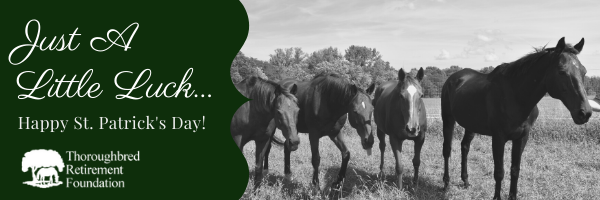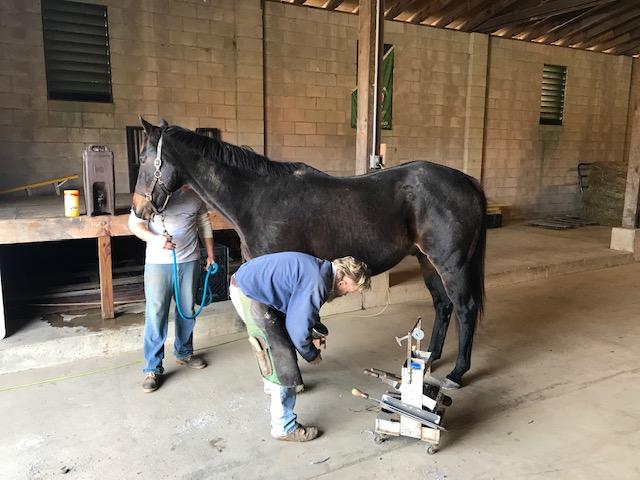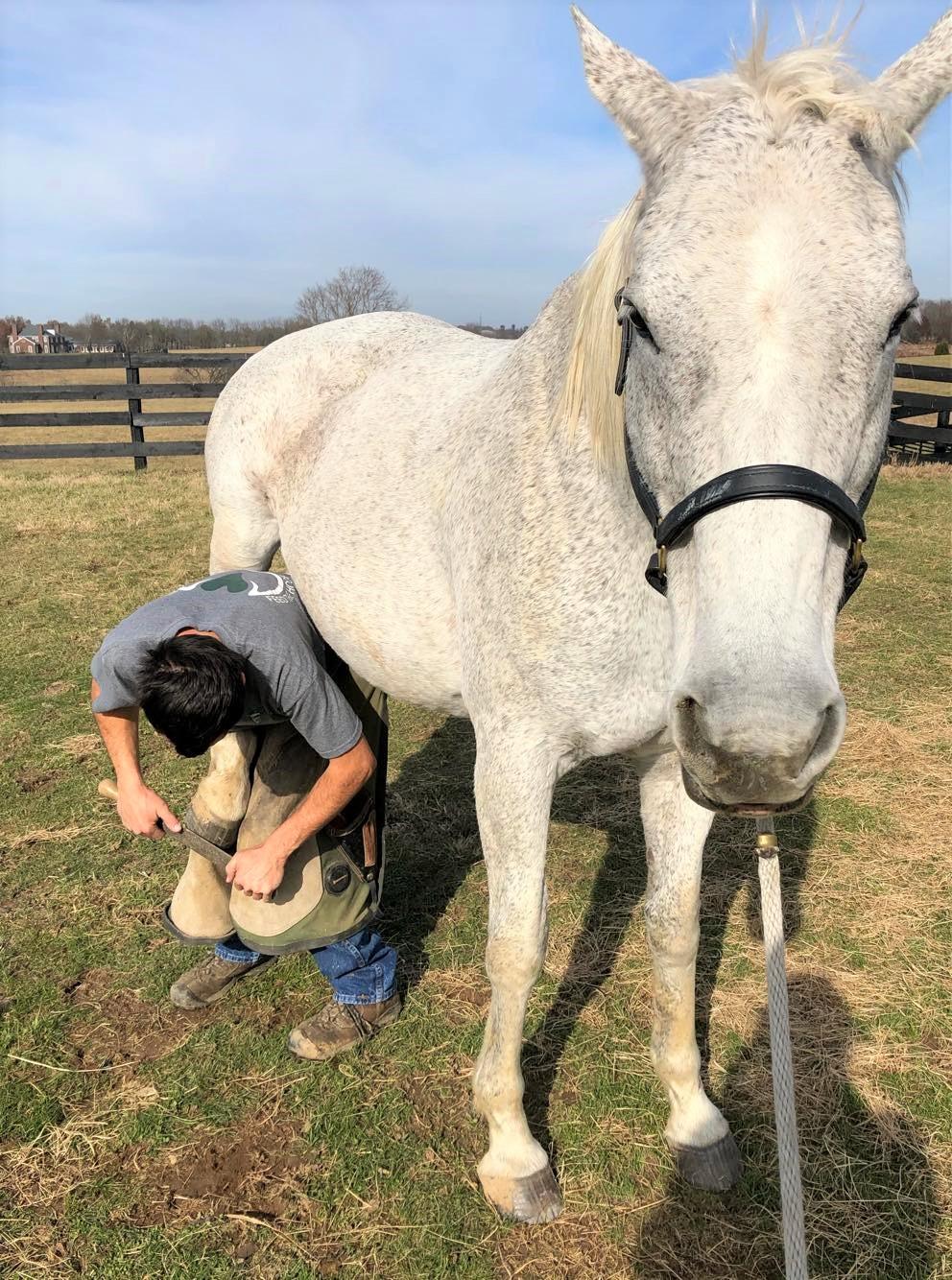A Good-Luck Shoe From the Horses!

In honor of St. Patrick’s Day, the horses of the TRF want to send you a horseshoe!
How about a little Irish Luck this week? Make a Gift!
“For the want of a nail the shoe was lost,
For the want of a shoe the horse was lost,
For the want of a horse the rider was lost,
For the want of a rider the battle was lost,
For the want of a battle the kingdom was lost,
And all for the want of a horseshoe-nail.”
-Benjamin Franklin, Poor Richard’s Almanack

The Legend of the Horseshoe
| Long before the invention of the steam engine or spinning wheels was a human invention that revolutionized ancient means of trade, transportation, and warfare- horseshoes.You may associate the horseshoe with stories of the old west, but the folklore surrounding the belief dates back to ancient times in 959 A.D. in Irish Folklore. |
The Story of St. Dunstan
 ☘ There are different tales from different lands, and depending on who you ask, you may get a slightly different version; but the message of the story remains the same. ☘ There are different tales from different lands, and depending on who you ask, you may get a slightly different version; but the message of the story remains the same.“In the 10th Century, St. Dunstan (a blacksmith at the time) was visited by a man that Dunstan quickly recognized as the Devil. Upon the visit, the hoofed Devil asked for a horseshoe for himself, and so Dunstan nailed a red-hot horseshoe tightly onto the Devil’s hooves, which caused him to howl in pain. He begged Dunstan to remove the shoe, and Dunstan agreed under one condition- the Devil must respect the horseshoe and never enter any place where one was hung above the door.” Because of this story, people believed that the horseshoe could keep evil spirits out of their homes, and thus bring in (or keep in) good fortune. |
More Legends & History
 ☘ Iron was deemed magical because it could withstand fire. ☘ Iron was deemed magical because it could withstand fire.☘ Traditionally, horseshoes were held in place with seven nails, seven being the luckiest number. (Seven days of the week, seven seas, seven continents, and even seven colors in the rainbow) ☘ The horseshoe is only considered lucky if it’s actually been worn by a horse. ☘ The ancient Greeks thought the element iron had the ability to ward off evil, and because it took the shape of the crescent moon, was a symbol of good fortune. ☘ In the British Isles in the Middle Ages, when fear of witchcraft was rampant, people attached horseshoes open-end-up on the sides of their houses and doors. People thought witches feared horses, and would shy away from any reminders. ☘ By 1835, a horseshoe manufacturing machine was patented for the first time in the U.S. The machine was capable of producing 60 shoes per hour. |
